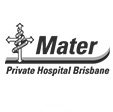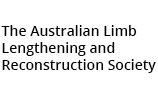Total Hip Replacement
The following information is for patients who have arthritis in their hip joints causing them such pain that they can no longer carry out their normal activities. The primary aim of a total hip replacement operation it to relieve this pain. It may, in addition, increase mobility and movement; correct any deformities; equalise leg length (although this is not guaranteed); and increase leg strength.
On this page you can find answers to the following questions:
- Do I need a total hip replacement?
- What does the procedure involve?
- How long will I spend in hospital?
- How long will it take to recover? What can I expect?
- What are the complications?
Do I need a total hip replacement?
Hip replacement is one of the most effective ways to relieve arthritic pain or repair severe physical joint damage. If your arthritis has not responded to non-surgical therapies, you may well be a candidate for a hip replacement.
What does the procedure involve?
Before your operation your surgeon will send you for some routine tests to assess your overall health. A physician will give you a general medical check-up. Should any problems arise from these investigations, they should be dealt with before you undergo surgery. Use of aspirin or anti-inflammatory medications should cease 10 days before your procedure—they cause your blood to thin and increase the amount of bleeding. The use of naturopathic or herbal medications should be discontinued 10 days before surgery. You should not smoke for as long as possible before the procedure.
On the day of your surgery you will be admitted to hospital. Further tests may be required at this point and the nursing staff will ask some questions for the hospital’s records. You will meet your anaesthetist, who will ask you a few questions. You will be asked to shower and to change into hospital clothes. The operation site will be shaved and cleaned. You will be transferred to the operating theatre half an hour before surgery.
The hip joint is exposed by an incision. The socket (or acetabulum) is prepared using a reamer—an instrument built specifically for this purpose. The acetabular component is then inserted into the socket. Screws are used to reinforce the socket or, occasionally, it is cemented. A liner—made of plastic, metal or ceramic—is then placed inside the acetabular component.
The thigh bone (or femur) is prepared. The arthritic femoral head is cut off and special instruments are used to prepare the bone to fit the new metal femoral component. This component is then fitted into the femur. Depending on the bone quality and the surgeon’s preference, this may be cemented in or press fit to allow the bone to grow into it. The real femoral head component, made of metal or ceramic, is then placed on the femoral stem. The hip is reduced again and the muscles and soft tissue carefully closed.
You will awake in the recovery room with various monitors recording your vital signs. Your hip will be dressed and your wound drained by a tube. During your recovery, post-operative X-rays will be performed. You will be taken back to the ward once you are stable and awake. Your anaesthetist will explain the drips in your arm, one providing fluid and pain relief.
On the day following your surgery your surgeon will allow you to sit out of bed or walk, depending on their preference. You can expect your pain to be normal, but you should advise your nurse if you experience a lot of pain. You will be able to place all of your weight on your hip and you will be guided through your post-operative exercises by your physiotherapist.
How long will I spend in hospital?
You will be discharged about a week after your surgery. Depending on your pain, and level of help at home, you will be allowed to go home or referred to a rehabilitation hospital.
How long will it take to recover? What can I expect?
The sutures will usually dissolve, but if they fail to do so will be removed after 10 days. A post-operative visit will be arranged after your discharge. You will be required to use crutches for two weeks following surgery and walking aids for another 4–6 weeks. You will be instructed on how to use these.
You should take some precautions when using your new hip:
- Above all, avoid the combined movement of bending your hip and turning your foot in. This will lead to dislocation
- Sleep with a pillow between your legs for six weeks. Do not cross your legs and bend your hip past a right angle
- Avoid bending over to pick up things. Make use of grabbers and shoe horns
- An elevated toilet seat is helpful
- You are free to shower once the wound has healed
- You can apply vitamin E or moisturizing cream into the wound once it has healed
- Should you have redness or swelling in your wound, or temperatures over 38°, contact your doctor
- If you are undergoing any other procedures such as dental work or other surgery you should take antibiotics to prevent infection in your new prosthesis. Please consult your surgeon
- Your hip replacement may set off an airport metal detector.
What are the complications?
When making the decision to undergo surgery, it is important that you weigh up the potential benefits of the surgery against the potential risks. It is important that you are thoroughly informed.
Complications from a total hip replacement can be general medical complications, or specific to the hip. Medical complications can arise from anaesthetic and your general fitness. Almost any medical condition can be triggered by surgery, so the following list is by no means exhaustive. Complications can include:
- Allergic reactions to medications
- Blood loss and transfusion, carrying the small chance of disease transmission
- Organ failure
- Nerve infection or damage
- Serious medical problems may lead to long-term health problems, ongoing hospitalisation or, in very rare cases, death.
Complications specific to a total hip replacement include:
Infection
Any operation can lead to infection. In total hip replacements the infection rate is approximately 1%. It is typically treated with antibiotics, but may require further surgery. In very rare cases, the hip may have need to be removed to eradicate infection.
Dislocation
Care needs to be taken with your new hip. In the event of a dislocation your hip will need to be put back into place under anaesthetic. In very rare cases, dislocation becomes a recurrent problem, requiring further surgery.
Blood clots (Deep Vein Thrombosis)
Blood clots may form in the calf muscles and can travel to your lung. This latter condition is known as a pulmonary embolism and is serious or even life threatening. Notify your surgeon should you experience shortness of breath or pains in your calf at any stage.
Damage to nerves or blood vessels
Damage to nerves or blood vessels is rare, but can cause weakness and loss of sensation in part of the leg. If the blood vessels are damaged, and bleeding persists, further surgery may be required.
Wound irritation
The scar may be sensitive or become numb. This will normally decrease over time and will not cause any problems with your new joint.
Leg length inequality
There is a chance that your hip replacement will cause a slight inequality between the lengths of your legs.





















